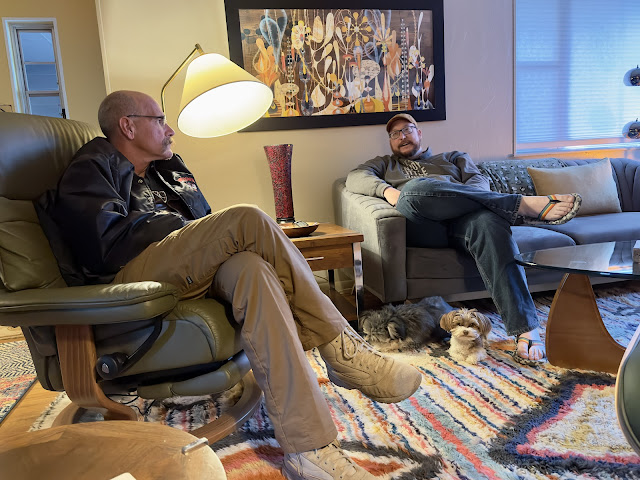Existing and Writing 3
Write like you talk. You want your readers to fall easily into your narrative, so focus on keeping it conversational. We talked about voice in Part 1 and content in Part 2, now we'll talk a little about style. I read a lot. You probably read a lot, too, whether you think so or not. Aside from scholars who live off reading and writing literary critical theory, I believe most of us enjoy reading a more conversational style.
I studied under Diane Wakowski for poetry (the creative side of my writing), and under Mary Lawlor (an underling of Harold Bloom), along with a sentimental influence, William Lockwood, for critical theory. Dr. Lawlor, whom I also had a crush on as an undergraduate, gave me the tools to really appreciate modern and post modern writing and the American West, specifically the notion of the "frontier". Dr. Lockwood (a cyclist back then as well!) introduced me to one of my favorite poets and gave me a signed copy from his personal collection after I toiled for days on an analysis of the poem "Westport". It was then that I learned that "+++" and "Yes!" meant great things from him in the margins of my graded essays. Lockwood appreciated my need to find new dimension and meaning in everything I read, even when I argued that Frost's "Stopping by Woods on a Snowy Evening" was most certainly about suicide or the subconscious desire to kill oneself. Ah, youth.
Regardless of the formalities in the "learning", I realized early on that both my poetry and prose languished under artificial exuberance (i.e. flowery writing that tried too hard). One year I wrote over 500 poems, one to two a day for the year was my goal. Most were heavy handed and make me cringe today when I force myself to read them. The simple ones that meant something to me at the time still flow today. Same with the story writing. I see the transformation from trying too hard to simply allowing the words to link together seamlessly, like a conversation. It works so much better.
If you speak directly, then write directly. Avoid going outside of your normal vocabulary; it will only make the reading strained and tedious. The natural feel of your normal conversational vocabulary and pace will come through and draw the reader in. If you're a dreamer and talk in circles, taking several stories to get to the main point, then write without constraint - sort of like James' stream of consciousness. The meaning will come through and the audience that matters will stay to the end, and get it. To continue the comparison with photo in social media, the natural images of something you personally feel are unique and interesting will make more of an impact than an image that means nothing to you that you enhance with some filter to make it "interesting". Don't write (or live, for that matter) like you're "affected", as my mother would say. Write like you talk.




"Whose woods these are I think I know..." That was actually one of my favorite poems. I never interpreted it like you did. I just liked it because there was mention of snow and the woods and "miles to go before I sleep."
ReplyDelete